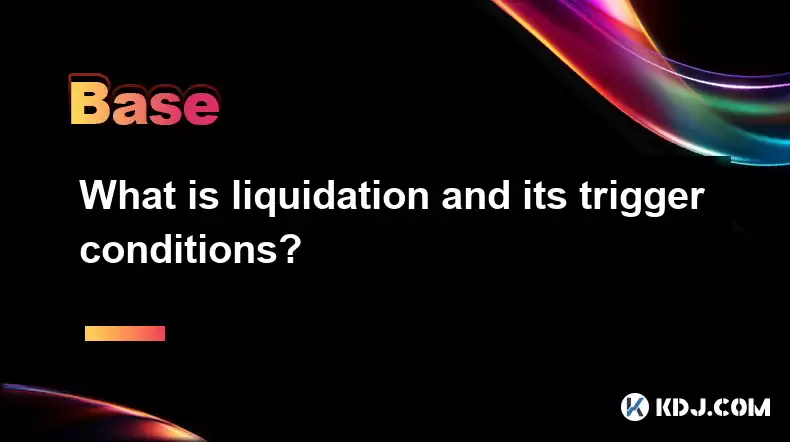-
 Bitcoin
Bitcoin $113400
-0.78% -
 Ethereum
Ethereum $3572
-2.11% -
 XRP
XRP $2.908
-4.07% -
 Tether USDt
Tether USDt $0.9999
0.00% -
 BNB
BNB $751.0
-1.27% -
 Solana
Solana $162.3
-3.12% -
 USDC
USDC $0.9998
-0.01% -
 TRON
TRON $0.3319
-0.54% -
 Dogecoin
Dogecoin $0.1963
-4.68% -
 Cardano
Cardano $0.7128
-4.47% -
 Hyperliquid
Hyperliquid $37.14
-2.57% -
 Stellar
Stellar $0.3858
-4.90% -
 Sui
Sui $3.341
-3.86% -
 Bitcoin Cash
Bitcoin Cash $554.6
-1.94% -
 Chainlink
Chainlink $16.10
-3.77% -
 Hedera
Hedera $0.2338
-4.24% -
 Ethena USDe
Ethena USDe $1.001
0.00% -
 Avalanche
Avalanche $21.66
-4.72% -
 Litecoin
Litecoin $117.8
-2.92% -
 UNUS SED LEO
UNUS SED LEO $9.002
0.08% -
 Toncoin
Toncoin $3.156
-6.13% -
 Shiba Inu
Shiba Inu $0.00001192
-3.09% -
 Uniswap
Uniswap $9.411
-3.25% -
 Polkadot
Polkadot $3.562
-2.50% -
 Dai
Dai $0.9999
0.00% -
 Monero
Monero $288.9
-4.05% -
 Bitget Token
Bitget Token $4.274
-1.88% -
 Cronos
Cronos $0.1362
-1.79% -
 Pepe
Pepe $0.0...09999
-4.55% -
 Aave
Aave $252.7
-2.97%
What is liquidation and its trigger conditions?
Liquidation in crypto trading occurs when collateral falls below the maintenance margin, triggering the platform to close the position to prevent further losses.
Apr 10, 2025 at 04:15 am

What is Liquidation and Its Trigger Conditions?
Liquidation in the context of cryptocurrency trading, particularly within the realm of decentralized finance (DeFi) and margin trading, refers to the process where a trader's position is forcibly closed due to insufficient funds to maintain the position. This occurs when the market moves against the trader's position, causing the value of their collateral to fall below a certain threshold. Understanding liquidation and its trigger conditions is crucial for anyone engaging in leveraged trading or using DeFi platforms.
The Basics of Liquidation
Liquidation is a risk management mechanism designed to protect both the trader and the platform from incurring significant losses. When a trader uses leverage to open a position, they are essentially borrowing funds to amplify their trading power. The borrowed amount is secured by collateral, which is typically the trader's own cryptocurrency holdings. If the market moves unfavorably, the value of the collateral may drop, and if it falls below a predetermined level, the position is liquidated to prevent further losses.
Types of Liquidation
There are two main types of liquidation in the crypto space: partial liquidation and full liquidation.
- Partial liquidation occurs when only a portion of the trader's position is closed to bring the collateral back to a safe level. This allows the trader to maintain some exposure to the market while reducing their risk.
- Full liquidation happens when the entire position is closed, and the trader's collateral is used to cover the losses. This is typically triggered when the collateral value drops significantly below the maintenance margin.
Trigger Conditions for Liquidation
The trigger conditions for liquidation are primarily based on the concept of margin levels. There are two key margin levels that traders need to be aware of: the initial margin and the maintenance margin.
- Initial margin is the minimum amount of collateral required to open a leveraged position. This is set by the trading platform and varies depending on the asset and the level of leverage.
- Maintenance margin is the minimum amount of collateral required to keep the position open. If the value of the collateral falls below this level, the position is at risk of being liquidated.
The specific trigger condition for liquidation is when the collateral value falls below the maintenance margin. This can be expressed as a percentage of the total position value or as an absolute amount, depending on the platform's rules.
Factors Influencing Liquidation
Several factors can influence the likelihood of liquidation, including:
- Market volatility: High volatility increases the risk of rapid price movements that can push the collateral value below the maintenance margin.
- Leverage level: Higher leverage amplifies both gains and losses, making positions more susceptible to liquidation.
- Asset type: Different cryptocurrencies have varying levels of volatility and liquidity, which can affect the risk of liquidation.
- Platform rules: Each trading platform has its own set of rules and parameters for liquidation, which traders must understand and adhere to.
How to Avoid Liquidation
To minimize the risk of liquidation, traders can take several steps:
- Monitor positions closely: Regularly check the value of your collateral and the market conditions to anticipate potential liquidation risks.
- Use stop-loss orders: Setting stop-loss orders can help limit losses and prevent positions from reaching the liquidation point.
- Adjust leverage: Reducing the level of leverage can decrease the risk of liquidation by requiring less collateral to maintain the position.
- Diversify: Spreading investments across different assets can reduce the impact of a single asset's price movement on the overall portfolio.
The Process of Liquidation
When a position is liquidated, the process typically involves the following steps:
- Detection: The trading platform's system detects that the collateral value has fallen below the maintenance margin.
- Notification: The trader is often notified of the impending liquidation, although this may not always be possible in fast-moving markets.
- Execution: The platform automatically closes the position at the current market price to minimize losses.
- Settlement: The proceeds from the liquidation are used to cover the borrowed funds, and any remaining collateral is returned to the trader.
Real-World Examples of Liquidation
To illustrate how liquidation works in practice, consider the following hypothetical scenarios:
- Scenario 1: A trader opens a long position on Bitcoin with 10x leverage, using $1,000 as collateral. The initial margin requirement is 10%, and the maintenance margin is 5%. If the price of Bitcoin drops by 50%, the collateral value falls to $500, which is below the maintenance margin of $500 (5% of the total position value of $10,000). The position is liquidated, and the trader loses their entire collateral.
- Scenario 2: A trader opens a short position on Ethereum with 5x leverage, using $2,000 as collateral. The initial margin requirement is 20%, and the maintenance margin is 10%. If the price of Ethereum rises by 20%, the collateral value falls to $1,600, which is still above the maintenance margin of $1,000 (10% of the total position value of $10,000). However, if the price continues to rise and the collateral value drops to $900, the position is liquidated, and the trader loses a significant portion of their collateral.
Frequently Asked Questions
Q: Can liquidation be avoided once the collateral value falls below the maintenance margin?
A: Once the collateral value falls below the maintenance margin, liquidation is typically unavoidable. However, some platforms may offer a grace period or allow for additional collateral to be added to prevent liquidation. It's important to check the specific rules of the platform you are using.
Q: What happens to the remaining collateral after liquidation?
A: After liquidation, the proceeds from the closed position are used to cover the borrowed funds. Any remaining collateral is returned to the trader. If the losses exceed the collateral value, the trader may owe additional funds to the platform.
Q: How can I calculate the risk of liquidation for my positions?
A: To calculate the risk of liquidation, you need to know the initial margin, maintenance margin, and the current value of your collateral. You can then simulate different market scenarios to see how the collateral value would change and whether it would fall below the maintenance margin. Many trading platforms offer tools and calculators to help with this analysis.
Q: Are there any strategies to manage liquidation risk effectively?
A: Yes, several strategies can help manage liquidation risk. These include using stop-loss orders, adjusting leverage levels, diversifying your portfolio, and regularly monitoring your positions. Additionally, understanding the specific rules and parameters of the trading platform you are using can help you make more informed decisions.
Disclaimer:info@kdj.com
The information provided is not trading advice. kdj.com does not assume any responsibility for any investments made based on the information provided in this article. Cryptocurrencies are highly volatile and it is highly recommended that you invest with caution after thorough research!
If you believe that the content used on this website infringes your copyright, please contact us immediately (info@kdj.com) and we will delete it promptly.
- Coinbase, Financing, and the Crypto Market: Navigating Choppy Waters in NYC Style
- 2025-08-06 12:50:11
- Bitcoin in Indonesia: Crypto Education and Economic Strategy
- 2025-08-06 12:50:11
- DeriW Mainnet: Zero Gas Fees Revolutionize On-Chain Derivatives Trading
- 2025-08-06 10:30:11
- IOTA, Cloud Mining, and Eco-Friendly Crypto: A New York Investor's Take
- 2025-08-06 10:30:11
- Kaspa (KAS) Price Prediction: August 6 - Will It Break Free?
- 2025-08-06 10:50:12
- Pension Funds, Bitcoin ETFs, and Exposure: A New Era of Institutional Crypto Adoption
- 2025-08-06 12:55:12
Related knowledge

What is the difference between CeFi and DeFi?
Jul 22,2025 at 12:28am
Understanding CeFi and DeFiIn the world of cryptocurrency, CeFi (Centralized Finance) and DeFi (Decentralized Finance) represent two distinct financia...

How to qualify for potential crypto airdrops?
Jul 23,2025 at 06:49am
Understanding What Crypto Airdrops AreCrypto airdrops refer to the distribution of free tokens or coins to a large number of wallet addresses, often u...

What is a crypto "airdrop farmer"?
Jul 24,2025 at 10:22pm
Understanding the Role of a Crypto 'Airdrop Farmer'A crypto 'airdrop farmer' refers to an individual who actively participates in cryptocurrency airdr...

What is the difference between a sidechain and a Layer 2?
Jul 20,2025 at 11:35pm
Understanding the Concept of SidechainsA sidechain is a separate blockchain that runs parallel to the main blockchain, typically the mainnet of a cryp...

What is the Inter-Blockchain Communication Protocol (IBC)?
Jul 19,2025 at 10:43am
Understanding the Inter-Blockchain Communication Protocol (IBC)The Inter-Blockchain Communication Protocol (IBC) is a cross-chain communication protoc...

How does sharding improve scalability?
Jul 20,2025 at 01:21am
Understanding Sharding in BlockchainSharding is a database partitioning technique that is increasingly being adopted in blockchain technology to enhan...

What is the difference between CeFi and DeFi?
Jul 22,2025 at 12:28am
Understanding CeFi and DeFiIn the world of cryptocurrency, CeFi (Centralized Finance) and DeFi (Decentralized Finance) represent two distinct financia...

How to qualify for potential crypto airdrops?
Jul 23,2025 at 06:49am
Understanding What Crypto Airdrops AreCrypto airdrops refer to the distribution of free tokens or coins to a large number of wallet addresses, often u...

What is a crypto "airdrop farmer"?
Jul 24,2025 at 10:22pm
Understanding the Role of a Crypto 'Airdrop Farmer'A crypto 'airdrop farmer' refers to an individual who actively participates in cryptocurrency airdr...

What is the difference between a sidechain and a Layer 2?
Jul 20,2025 at 11:35pm
Understanding the Concept of SidechainsA sidechain is a separate blockchain that runs parallel to the main blockchain, typically the mainnet of a cryp...

What is the Inter-Blockchain Communication Protocol (IBC)?
Jul 19,2025 at 10:43am
Understanding the Inter-Blockchain Communication Protocol (IBC)The Inter-Blockchain Communication Protocol (IBC) is a cross-chain communication protoc...

How does sharding improve scalability?
Jul 20,2025 at 01:21am
Understanding Sharding in BlockchainSharding is a database partitioning technique that is increasingly being adopted in blockchain technology to enhan...
See all articles

























































































